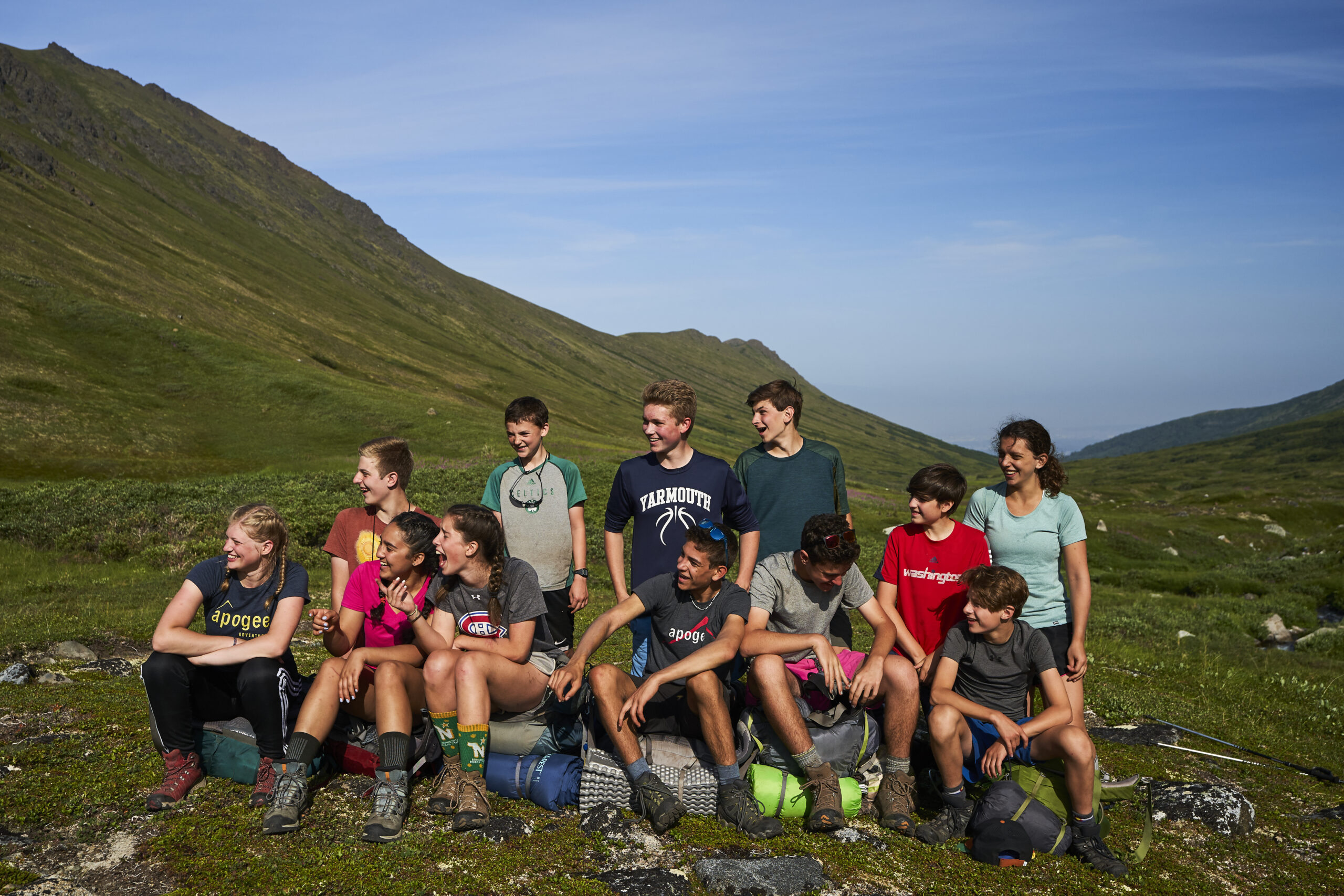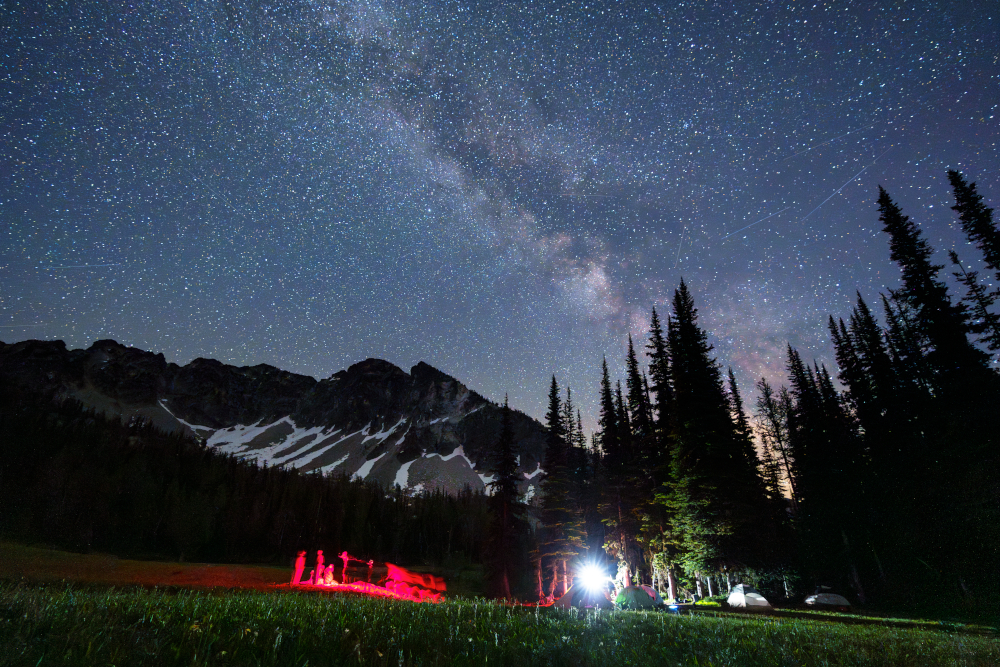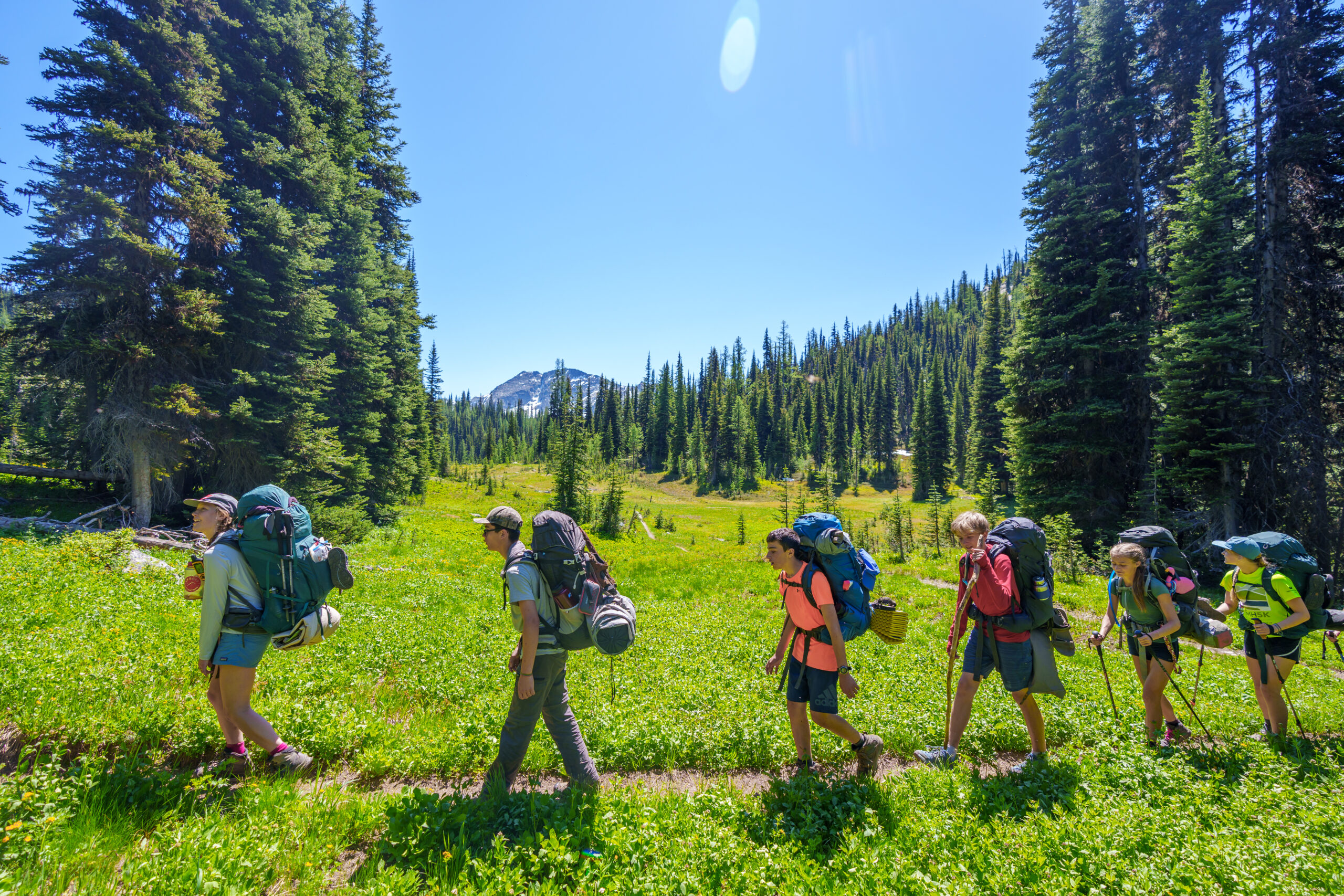By Jack Messerly
If you are familiar with Apogee, then you know that the primary goals for our students (and staff) are to experience a sense of community, build confidence, and explore some of the most beautiful outdoor spaces around the world. I think nothing epitomizes those values quite like a trip to the backcountry; each Apogee group must come together as a team in order to successfully navigate the challenges (and experience the rewards) of exploring a remote wilderness.
There are many reasons I love spending time in the backcountry: it’s an opportunity to get away from the hustle and bustle of work, school, and social media; it provides a true sense of independence; and the natural beauty is second-to-none. And while you can certainly experience these things to various degrees while getting out for a day hike, there’s nothing quite like heading into the wilderness for a period of days.
My philosophy professors taught me well, so I know I should first define some of my potentially-confusing terms before I get too deep into the body of this blog:
- Backcountry: there are a number of definitions out there, but for our purposes here, the backcountry is anywhere sufficiently removed from advanced medical care and technology (as well as running water and bathrooms, etc.).
- Front-country (why this is two words while “backcountry” is one word is beyond me): where there is near-immediate access advanced care (i.e. road access), cell service, running water, flush toilets, etc.
- Backpacking: any multi-day trip into the backcountry.
- Hiking: a single day hike, which will start and end in the front country.
With those in mind, here are some questions that we field all the time: What equipment do we bring, and how do we pack it all? What do we eat while in the backcountry? What do we do with our garbage? What’s the deal with the bathroom situation? What happens if there’s an emergency? What’s so great about the backcountry anyway? All great questions! Let’s dive right in.
What equipment do we bring and how do we pack it all?
This part isn’t actually as overwhelming as it might initially seem. First, we need the basics, which we clearly denote on our trip-specific equipment lists. Backcountry clothing is pretty similar to typical athletic-wear (we want lightweight, quick-dry materials), and our backcountry packing list will include a lot of layers, which allows us to be efficient and adaptable based on the weather, changing altitudes, etc. Everyone will also pack their toiletries, sleeping pad, sleeping bag, and a part of a tent (the body, the rain fly, or the poles), which are split equally between each tent group. Then, everyone will chip-in and carry some group cooking equipment (e.g. small, portable stoves and fuel, pots and pans, utensils, etc.), as well as some food (more on this later). The leaders will bring a variety of other useful items, including medical kits, maps, GPS communication devices, bathroom equipment (see below…), etc.
Before kicking off a backcountry trip, our leaders will walk their groups through a thorough backcountry packing demo, where they will cover everything from waterproofing to efficient packing.
-
- Bases (carbs and starches): pasta, quinoa, couscous, rice, oatmeal, bagels, sweet potatoes, tortillas, and pitas
- Protein: peanut or other nut butter spreads, hummus, canned chicken and fish, beans, summer sausage, and cheese (which, contrary to popular belief, does not need to be refrigerated!)
- Produce: peppers, onions, broccoli, carrots, apples, and oranges
- Condiments, sauces, and toppings: jelly, Nutella, mustard, marinara, pesto, hot sauce, honey, bouillon cubes (for soups), soy sauce
- Dessert: s’mores, worms and dirt, and dunkaroos
- Drinks: tea, hot chocolate, and electrolyte powder/tabs
So for all of our trips, we follow the Leave No Trace Seven Principles:
- Plan Ahead and Prepare: This is the step that happens before our trips even begin; we make sure that we have all of our required permits, we have a clear understanding of the rules and regulations of where we will be traveling, and that all of this information is properly explained to our leaders and students.
- Travel & Camp on Durable Surfaces: The main idea behind this principle is that we want to minimize our impact by hiking on established gravel or dirt trails and camping at existing campsites and away from water sources. For example, when we are hiking down a trail (single file!) and come across a big puddle, we hike through the puddle, rather than trampling off-trail to go around it, which would assist erosion and damage other fragile vegetation.
- Dispose of Waste Properly: Here’s a phrase you might have heard before: “Pack it in, pack it out.” Every piece of garbage, every food scrap, and all of our toilet paper that we bring into the backcountry will be packed out with us to be disposed properly in the front country. This also refers to disposing of human waste properly, which I will get to below…
- Leave What You Find: Unfortunately, we won’t be picking those beautiful Washington wildflowers or pocketing any Maine seashells this summer. I know it might seem like no big deal, but it begs the ol’ “if everyone did it…” response. Another classic backcountry adage advises us, “Take only photographs, leave only footsteps.”
- Minimize Campfire Impacts: There is nothing that quite compares to roasting marshmallows over a campfire, and we encourage it on all Apogee trips where regulations allow. But we are always extremely careful to completely extinguish our fires (so that it’s no longer smoking), we only use existing campfire rings, and always keep the fires small and well-contained. It’s worth noting that some areas we visit don’t allow fires in the backcountry at all!
- Respect Wildlife: One of the coolest parts of heading into the wilderness is the opportunity to spot mountain goats in Washington, Swiss ibex, or the iconic Maine moose. But it’s important that we keep our distance, and do everything in our power not to disturb these animals (after all, how would you like it if a marmot wandered into your house?). As I mentioned before, we will never feed animals (intentionally or not), which includes properly storing our food, either in a bear-bag hung in a tree or in bear canisters.
- Be Considerate of Other Visitors: Especially as a large group on the trails, it’s more important than ever to be conscientious to other hikers, so as not to negatively impact their experiences. Keeping the volume down, yielding the trail to smaller groups of hikers, and making sure our water and snack breaks don’t clog the trail are a few of the ways we keep others in mind.
We take the role of environmental stewardship seriously, and learning about the Leave No Trace Seven Principles can be one of the most rewarding parts of an Apogee experience.
What’s the deal with the bathroom situation?
As we sit in our offices at work or at our desks in school, each one of us will occasionally look out the window and feel like nature is calling us to go outside. Other times, when we are outside and enjoying the great outdoors, nature calls again, but in a slightly different way. So how does that work when we are miles away from the nearest toilet? The standard protocol to dispose solid human waste in the backcountry is to use a trowel to dig a 6-8 inch cathole to create your own personal toilet. Or when we are island camping in the San Juan Islands during an overnight kayaking trip, we actually need to pack out the solid waste itself via a disposable toilet (or “wag bag”). We always pack out all toilet paper in a duct-tape wrapped ziplock bag (affectionately referred to as the “mystery bag”), and make sure that our leaders discuss proper sanitation – there is always a bottle of hand sanitizer that travels with the toilet kit, plus proper handwashing, regardless of whether we are in the front-country or backcountry.
We understand that this activity, though totally necessary, can be pretty intimidating and uncomfortable to talk about. Fortunately, our leaders are prepared to cover all of the important information ahead of time and implement strategies and an open line of communication to make it more comfortable for everyone. [Side note: I attended a two-hour long professional course on this subject that included stories, techniques, and, probably most importantly, how to teach this to students!]. In some cases, the backcountry campsites that you stay at will have “privy” toilets, which is a fancy term for an outhouse, but not all campsites have this luxury!
What happens if there’s an emergency?
Especially when traveling into the backcountry, prevention and acting proactively is the name of the game, but, of course, it would be irresponsible not to be prepared for emergencies. The first line of defense is our leaders; all of our trips that venture into the backcountry will have at least one Wilderness First Responder (WFR)-certified leader. A WFR certification is an intensive, 80-hour wilderness medicine training, which prepares our leaders to deal with a huge variety of medical emergencies. At a minimum, the other leader will have a Wilderness First Aid Certification (WFA), which also covers important backcountry medical procedures, like allergies and splints. All of our leaders will also be certified in CPR.
When additional support or more advanced care is required, our leaders on backcountry trips are equipped with GPS communication devices to be in touch with both us in the office as well as nearby EMS services.
What’s so great about the backcountry anyway?
I would be willing to bet that most Apogee leaders and students would agree that the backcountry portion is the most impactful, confidence-building, group cohesion-strengthening part of their trip. But why is that?
It’s difficult to put into words exactly why the backcountry is so meaningful; maybe it’s the feeling of independence when carrying everything you need on your back; maybe it’s interacting with and immersing yourself in nature to an extent you have never before experienced; or maybe it’s the dichotomy between the vast expanses of the wilderness and the close-quarters of group living. Whatever it is, from my experience leading Apogee trips for three summers and witnessing many more trips second-hand, I know that the backcountry can be the turning point of a trip. Up until we entered the backcountry, my groups were friendly and getting along well, but, when backpacking, say, along the 100-Mile Wilderness in Maine, something clicks, and all of a sudden, I watched “friendly” become “inseparable” and “getting along well” transform into uncontrollable laughter. Some of my fondest memories as an Apogee leader include a particularly deep conversation under the un-polluted starry backcountry sky, and watching the sun set over Switzerland’s Mont Blanc.
 We hope you’ll understand why there aren’t any more relevant pictures to this particular section of the post…
We hope you’ll understand why there aren’t any more relevant pictures to this particular section of the post… The experience of a backcountry trip is a lesson in building confidence, creating an “Apogee family”, and fostering love for the outdoors. And, yes, while there is a lot that goes into carefully planning each backcountry expedition, we are in this line of work for a reason: because we love it, and it is
The experience of a backcountry trip is a lesson in building confidence, creating an “Apogee family”, and fostering love for the outdoors. And, yes, while there is a lot that goes into carefully planning each backcountry expedition, we are in this line of work for a reason: because we love it, and it is 